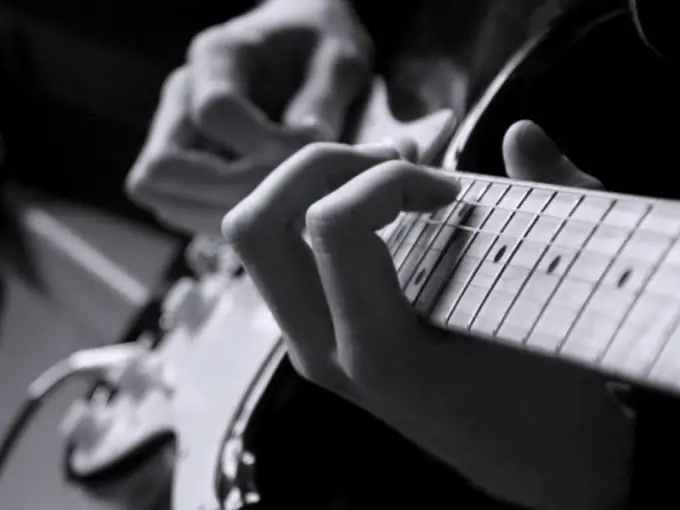A guitar neck is much more fragile than it is generally believed, it breaks and cracks, and therefore musicians are forced to either change the instrument or repair the neck.

It is necessary
- - electric sander;
- - jigsaw;
- - electric drill;
- - milling machine;
- - compressor unit (spray gun, paint and varnish);
- - plane;
- - scraper;
- - sherhebel;
- - joinery clamps;
- - pliers;
- - nippers;
- - a hammer;
- - knife;
- - files;
- - screwdrivers (Phillips).
Instructions
Step 1
Decide on wood for the neck of your electric guitar. When choosing wood, pay attention to the location of the fibers; their location should be symmetrical, without sharp bends. The selected wood must be free of knots. Check it for sound, tap it. You can use maple, ash, or mahogany. Usually craftsmen use pine and spruce, but oak wood is not at all suitable.
Step 2
Make a fretboard pattern (template) out of paper. You can make the headstock straight or at an inclination of 13-17˚. If you will be doing in a straight line, then you need to install retainers so that the strings are pressed against the nut.
Step 3
If you will make the head of the neck without tilting relative to the neck itself, then make the entire workpiece from a single piece. If it has a slope, then make a part from a separate piece of wood, and then glue it to the neck.
Step 4
Prepare wood. Make the markup. Give the workpiece the same taper to the nut on both sides. Use a jigsaw to cut out the stock and headstock. The cross-section of the neck has two bends (1 - fretboard radius, 2 - neck profile). Create a profile at the nut with a file. Profile the heel of the bar with a scraper. Connect with each other.
Step 5
The hardest job is marking the frets. Try to make it more accurate. Dimensions for any scale are available on the Internet. For even cuts, make a kind of miter box. To keep the frets straight on the fretboard, give them the same radius as the fretboard, or straighten them completely.
Step 6
Using a hammer or mallet, carefully hammer the fret, starting from the end. File the frets on the sides with a file. Align them with each other in height using a block and sandpaper.
Step 7
This completes the work with the tree, you can start painting work. Clean the area for painting in advance from debris and dust. Sand the body of the guitar with fine sandpaper (P500-1000) before painting, removing all irregularities. Apply the first layer of nitroglycerin.
Step 8
Then remove it with fine sandpaper. Do not overdo it! The primer was needed to fill the pores in the wood. Apply a layer of nitro-primer again, sand again. And only after these works apply paint, and then varnish.






